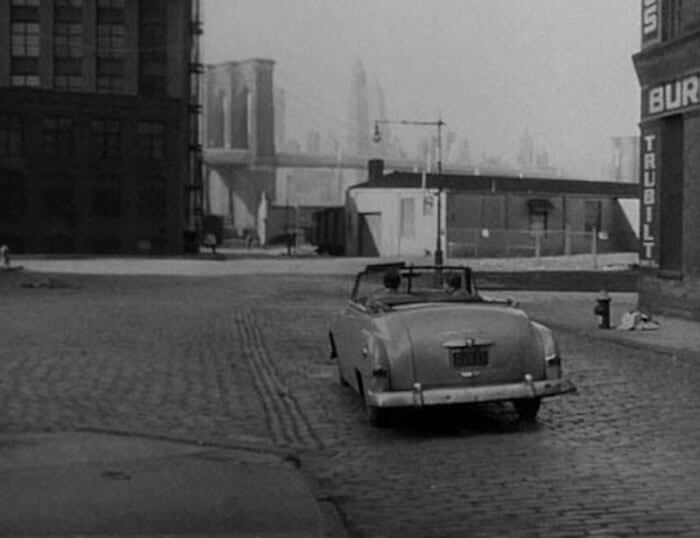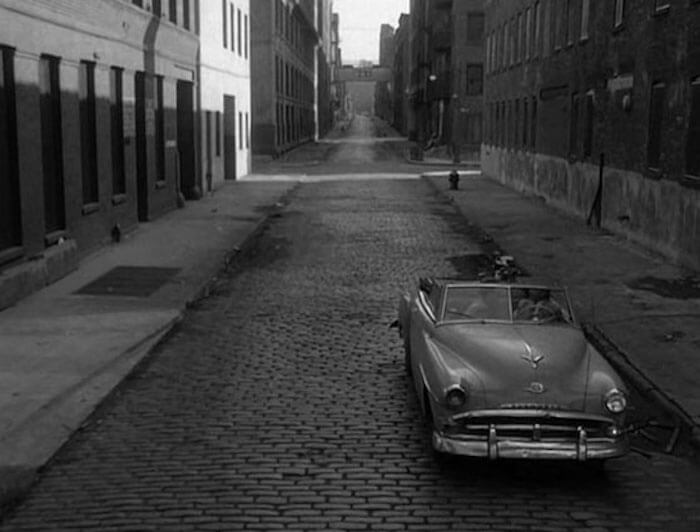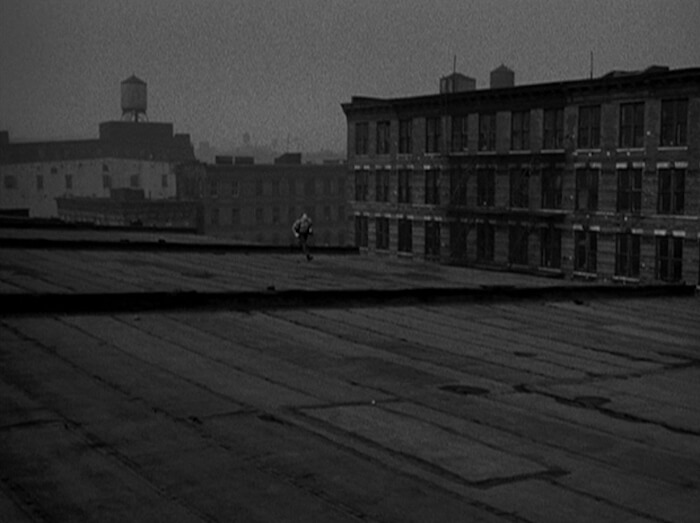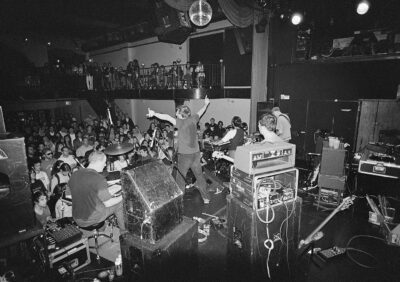Reel Brooklyn: Killer’s Kiss, DUMBO
 Reel Brooklyn is a biweekly column chronicling the definitive history of Brooklyn on-screen, one film—and neighborhood—at a time.
Reel Brooklyn is a biweekly column chronicling the definitive history of Brooklyn on-screen, one film—and neighborhood—at a time.
For decades before his death in 1999 the globe’s reigning genius-director demigod, Stanley Kubrick, had always seemed like a man without a country—a despot in his own kingdom of weird dreams and mega-visions. But he was in fact a born-bred New Yorker, a child of Clinton Avenue in the Bronx, and if of all of his films only his second indie production, 1955’s Killer’s Kiss, flaunted the verve and flavor of the city, it did so in spades. A nickel-&-dime noir with a thin story (it was the 26-year-old’s only original script, a risk he never took again) but enough urban grit to put the bite on many contemporaneous studio-shot noirs, the movie follows a failing boxer (Jamie Smith) as he gets mixed up with a svelte taxi dancer (Irene Kane, with the eyes), whose boss eventually resorts to murder and kidnapping to keep her. That Kubrick largely post-dubbed the entire film puts the already stiff performances at a sad disadvantage, but the crisp visual textures offer a virtual documentary view of what the various boroughs looked like in 1955.


In fact, it already feels like a post-noir—the city is that much realer, the apartments are that much dingier, the urban spaces are that much vaster. Kubrick began as an street photographer for LIFE, and this is the only one of his films where he brought that visual eye to bear, capturing midtown details by score (the window displays, movie marquees, street food, wandering evening crowds, that guy lugging the double bass, a pair of drunken Shriners, the old Penn Station in all of its ironwork glory), and essentially letting the city be its own character, easily overshadowing the film’s actual speaking roles. The movie was shot on the fly without permissions in Times Square and the Bronx, but also in DUMBO, where the hive of post-BQE, decaying-but-still-functional warehouses provided Kubrick with monumental sets he didn’t have to build, generating a sense of the city’s netherworlds untroubled by human beings and seemingly built for giants ages ago. One sequence has Smith’s desperate lug running from hoods across a spectacular warehouse rooftop right west of the Manhattan Bridge—atop a building that may no longer exist. As much as he couldn’t quite pull himself away from Times Square (the taxi dance hall was the Parisian, at Broadway and 49th, though the shots inside are so restricted it’s tempting to think he used another jerryrigged location for interiors), Kubrick was clearly enamored of Plymouth Street, with its Belgian blocks still unpaved. He used its long, warehousey emptiness as a negative-image dream path for the woozy hero midway through the movie, and then returned to it as one of the film’s final face-off locales, sitting right beneath the Manhattan and looking west at the Brooklyn Bridge’s southern limestone tower, in what might be the first cinematic incarnation of DUMBO’s trademarked visual identity: where the most beautiful 19th-century bridge looms like a castle in the mist.


This was a day, the movie lets us know, when New York subway cars had ceiling fans. Kubrick always thought of both Killer’s Kiss and his first feature, Fear and Desire (1953), as juvenilia, and even actively resisted their being disseminated in the age of home video. But given the climactic fight scene alone—set entirely in some waterfront garment warehouse filled with naked, bald, mute female mannequins—it’s a necessary noir, made with a rare passion for the rough grain of the city.
You might also like 



















